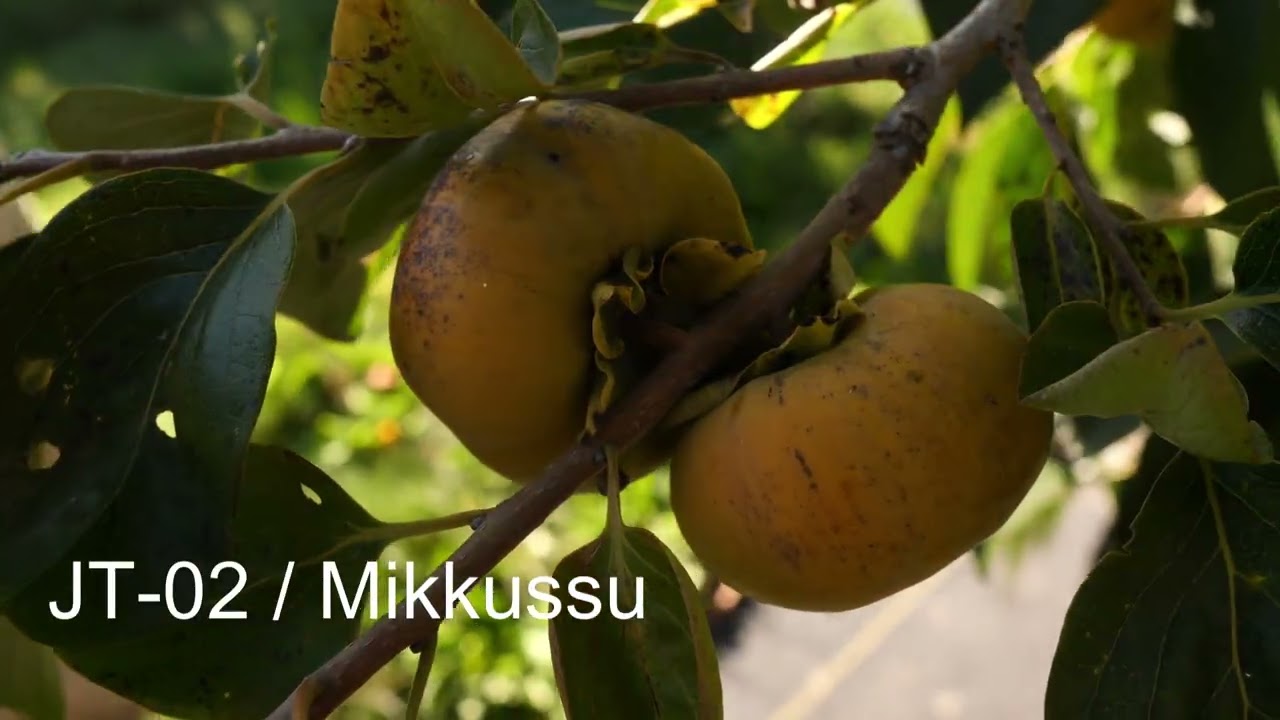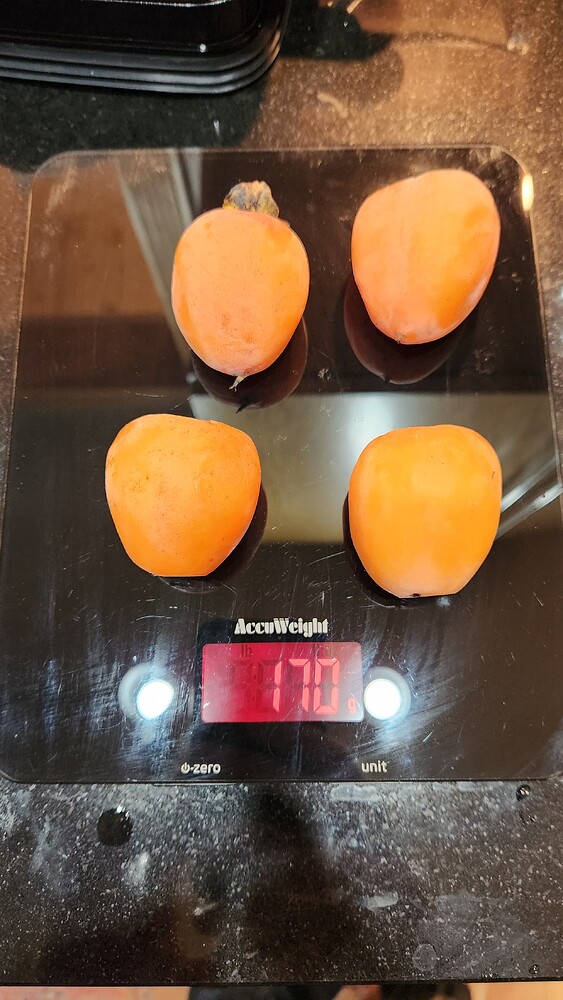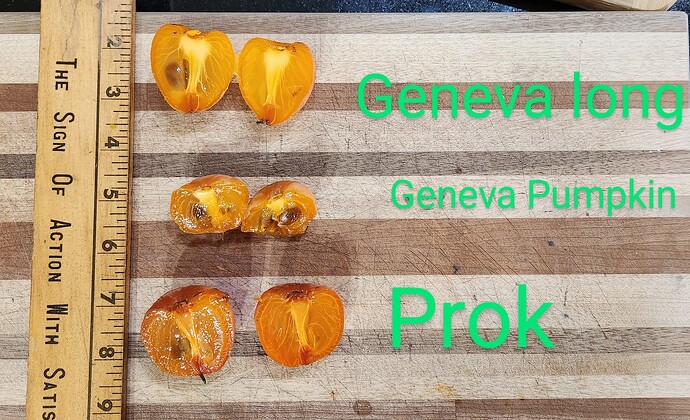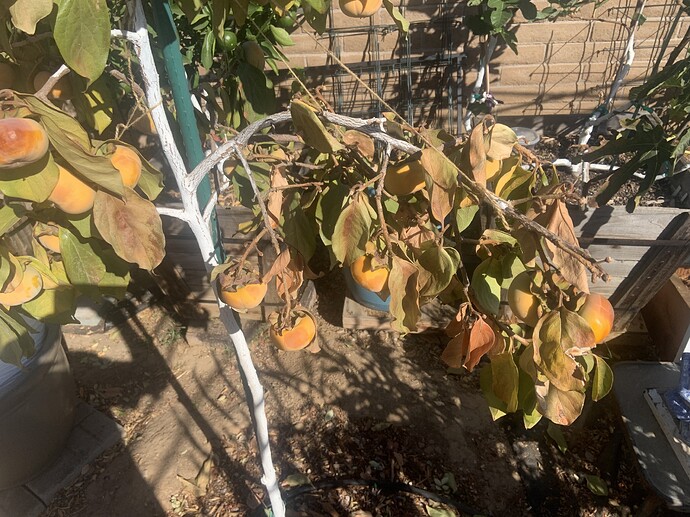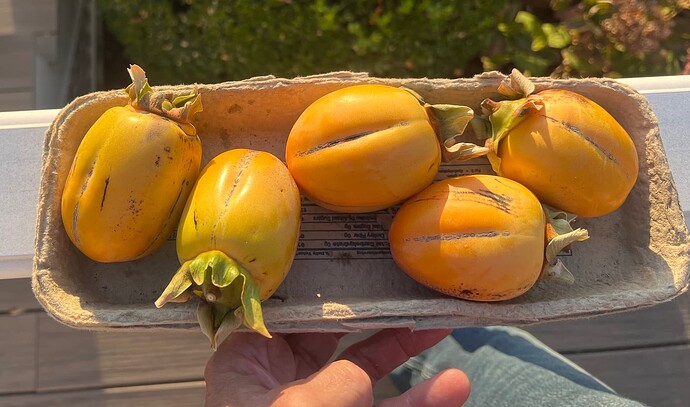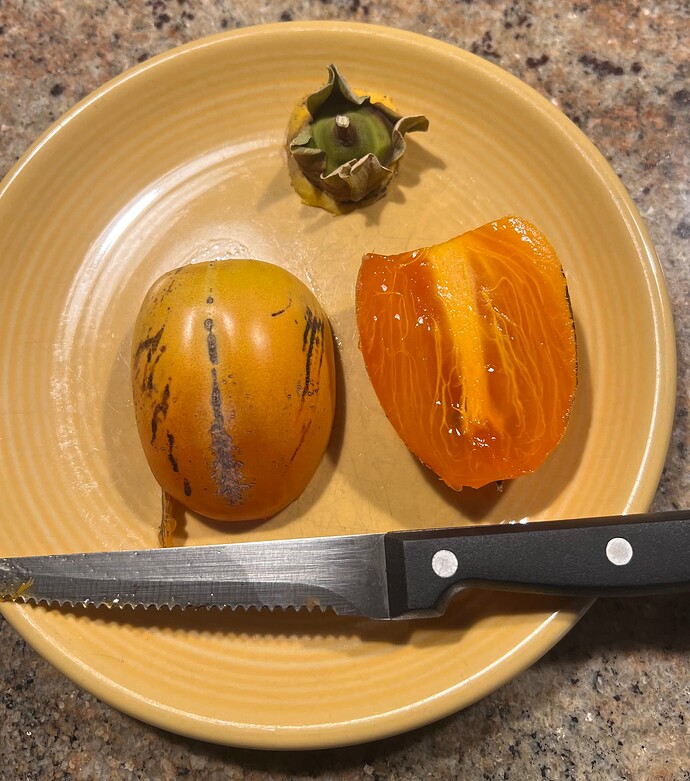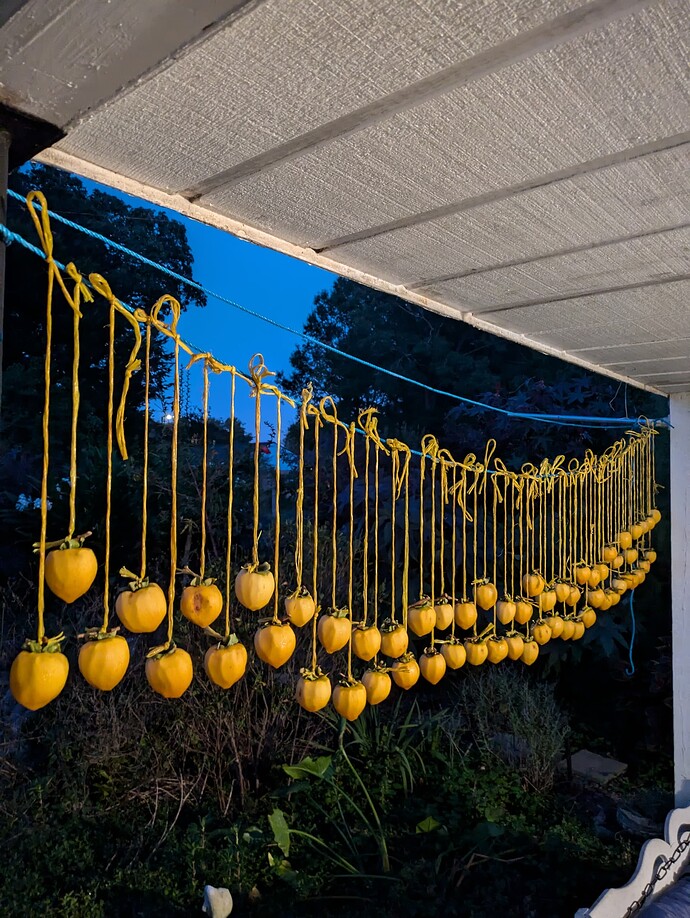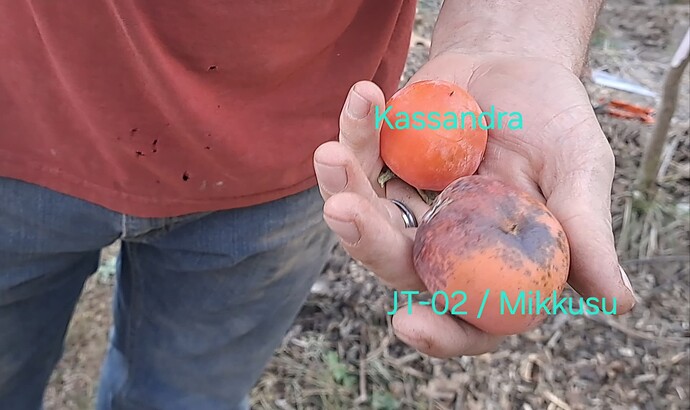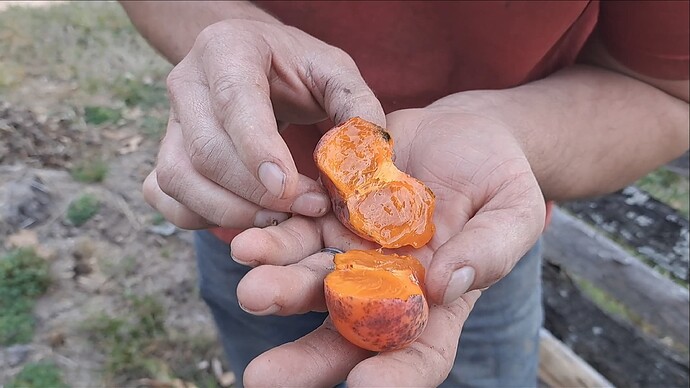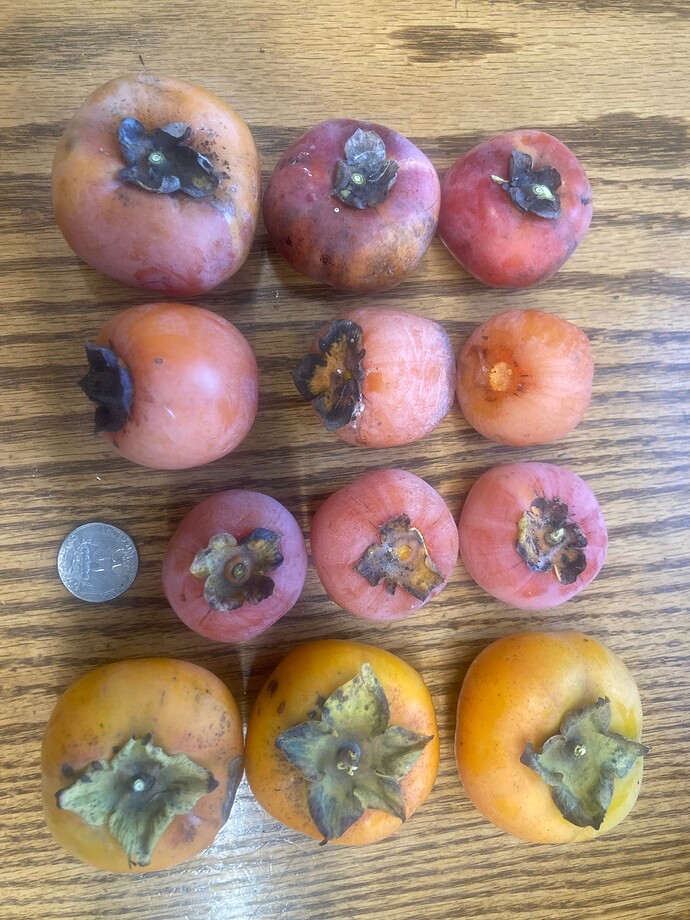Ken Asimus from Oikos nurseries said that Pipher was from a tree in north Central Illinois. I think I remember reading an article he wrote where he said he’d been to the original tree. I know he believes that E.G. lines are getting too inbred, and had looked for genetics outside. I don’t believe anyone knows the actual parentage of Pipher.
@Robert …
Rich Tooie… previous years.
On the sunny south side of the tree many of them turn very dark color when ripe.
TNHunter
Pipher is a grafted tree of unknown cultivar, likly it’s something selected at in early 1900’s as older selections like Golden Gem, Golden Supreme, Miller, Josephine are still around and don’t match the description. As for the inbreed it’s half-truth. In my point of view american persimmon (90n) is partialy ‘resistant’ to inbreeding as it’s originated from a small founding stock (random octaploids x tetraploids ?) and early seed grown cultivars (Garretson, Killen, John Rick, Florence) are quite good (it’s not my opinion as I don’t grow them but they are still available). Moving on, the best commercial varieties from Claypool’s and Lehman’s work are from crosses of unrelated femal x highly inbreeded male so if my theory is correct it’s possible to create as good clones in F2 or F3 with 25% EG by half-sibling crosses eg. Szukis x H-63A = Osage.
I had the opportunity to pick some american persimmon from someone local-ish to me here in MI. He had Prok, Yates, Geneva Long, and Geneva Pumpkin. Unfortunately, the Yates tree was pretty much done ripening fruit by now, but I got to try the others.
Prok
Geneva Long
Geneva Pumkin.
They had a couple male trees, so most fruit was fully seeded. Pumpkin was the worst in this regard, as it was heavily seeded and is a small fruit.
Ah my poor little Fuyu. Normally the leaves are so pretty with a reddish hue to them.this year it’s gone through a lot being in ground for the first time. It’s lost probably 150 persimmons I shouldn’t have let any grow. Does this look normal or is there anything you would worry about?
These are the last Saijo persimmons on my potted tree. I’ll let them finish ripening indoors. It’ll take just a few days. I’ve already eaten a half dozen or so, which were very goods.
Edit: After two days indoors, one was ripe. Taste was excellent. Brix was ~25.
@PharmerDrewee inspired me to try hoshigaki for the first time this year. I used unpollinated Giboshi because they have an acorn shape without any lobes that makes them easy to peel. I started them outside on my porch on October 6, but the yellowjackets started carving chunks out of them so I moved them indoors after the first week to finish. Most still need a little more time to finish drying, but I’m very pleased with the first samples. My family were initially all very skeptical, but my five-year-old just ate one and said they taste great.
My aunt just sent me a box of Hachiya from LA I am going to dry some. These fruits are good size.
Tony
How do you like the H63a?
John S
PDX OR
It is quite excellent. It’s been much more productive for me than h118. Still I could eat a lot more than it produces.
Have you been watering it? Ground looks rather dry
It’s on my list. Great to know it does fine here in PNWet. H118 is my most productive persimmon. I’m getting Szukis first, though, to increase pollination. Seeds don’t bother me.
John S
PDX OR
Doh! I just noticed the batteries died in my Rainbird. Poor tree trying to manage fruit with no water surprised they didn’t abort any. I also have 2 avocados, 1 pomegranate, 1 fig and a mandarin on the same line and they look fine. I can see the avo leaves dropping a little but I thought it was from the colder nights. Anyways good call thanks! ![]()
To date I have not tried a H63A that has totally lost astringency.
Maybe I’m more sensitive to it than others.
Every one I have tried was fully seeded and here in the “Midwest “.
Anyone else the same?
Maybe avoid the very top of the fruit? A little astringency doesn’t bother me though a well ripened h63a doesn’t have any - atleast here.
I didn’t notice any astringency in ripe H63A (or Barbra’s Blush, Dollywood) early in the season. Lately, I’ve noticed some lingering astringency even in ripe fruit. Maybe it relates to heat. It turned noticeably colder here a couple weeks ago.
Among other points: I think the astringency tends to linger under the skin. So you can reduce astringency by scooping the pulp with a spoon or with your teeth, leaving the skin behind. Also, @ramv has a point – the fruit seems to ripen from the bottom up. So you might reduce astringency by eating only the bottom half or two-thirds of the fruit.
Yeah i stared at the leaves and saw no insect damage so my first thought was water or soil issue ![]()
I got my first taste of JT-02 / Mikkusu.
Texture was extremely soft. That could just be me picking it later than I should have. Zero astringency. Taste is good, nothing really standing out, sweet. Some of the black spots on the skin were hard and unpleasant and got spit out. Zero astringency and was completely seedless. Overall it was nice, but the consensus of my family was that we prefer Kassandra for taste and texture so far. There was only one fruit on a 6 foot tall tree, so it may improve in some ways as the years go on. It’s worth growing for sure.





